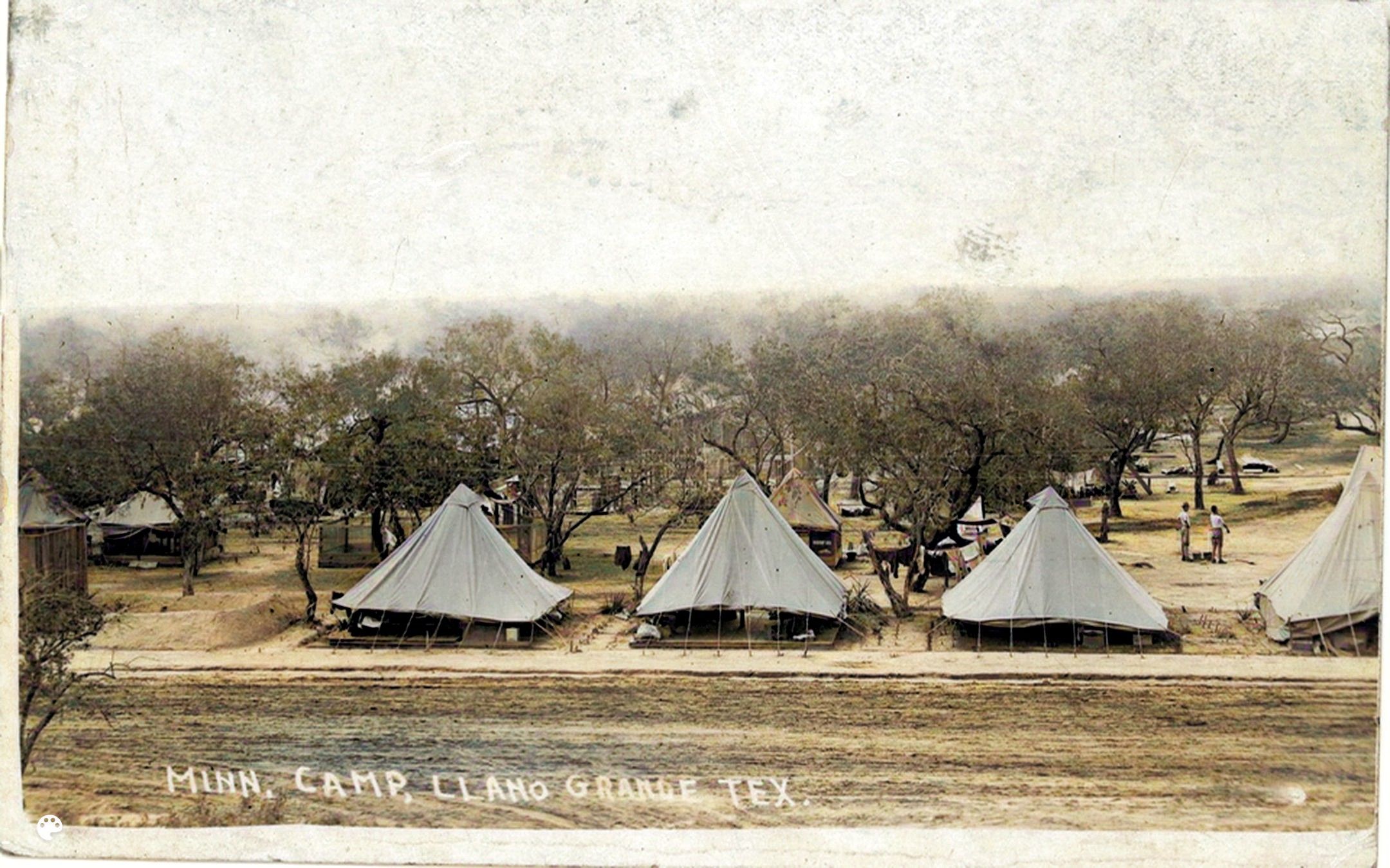 R045
Camp LLano Grande, Minnesota National Guard Unit 1916
R045
Camp LLano Grande, Minnesota National Guard Unit 1916
Camp Llano Grande was located near Mercedes and about five miles from the Rio Grande on a flat 200-acre site. It was served by a rail line and had a flag depot, but other than the main house, which became the camp hospital, and an old ranch house that became camp headquarters, there was little else in place when troops first arrived.
Their arrival precipitated a flurry of activity. Company areas were laid out, ditches dug for drainage, and brush cleared; latrines dug; incinerators erected; water pipes laid and buried. Structures were erected for kitchens and mess halls. Small wooden houses were built for officers, and platforms were built to keep the soldiers' tents off the ground. [90]
View Enlarged
View Library
 R042
Camp Llano Grande Main Headquarters 1916
R042
Camp Llano Grande Main Headquarters 1916
The Camp Headquarters was also the residence of the National Guard Commander. Llano Grande was the name given to the land when it was granted to Juan Jose Ynojosa de Balli by the Spanish Crown in the late 18th Century. The area was once overed in grasslands, or llano, and was large, or grande.[13]
In an interview with early resident Lorraine Kennedy, she recalled that her Grandfather, O.J. 'Red' Schaeffer, was a jitney driver at Camp Llano Grande. In 1918 the Mercedes City Council passed an ordinance making it illegal to speak German, or to use German in advertising, preaching, lecturing and entertaining. As the child of immigrants who grew up speaking German, this language policy caused him great distress. [23]
View Enlarged
View Library
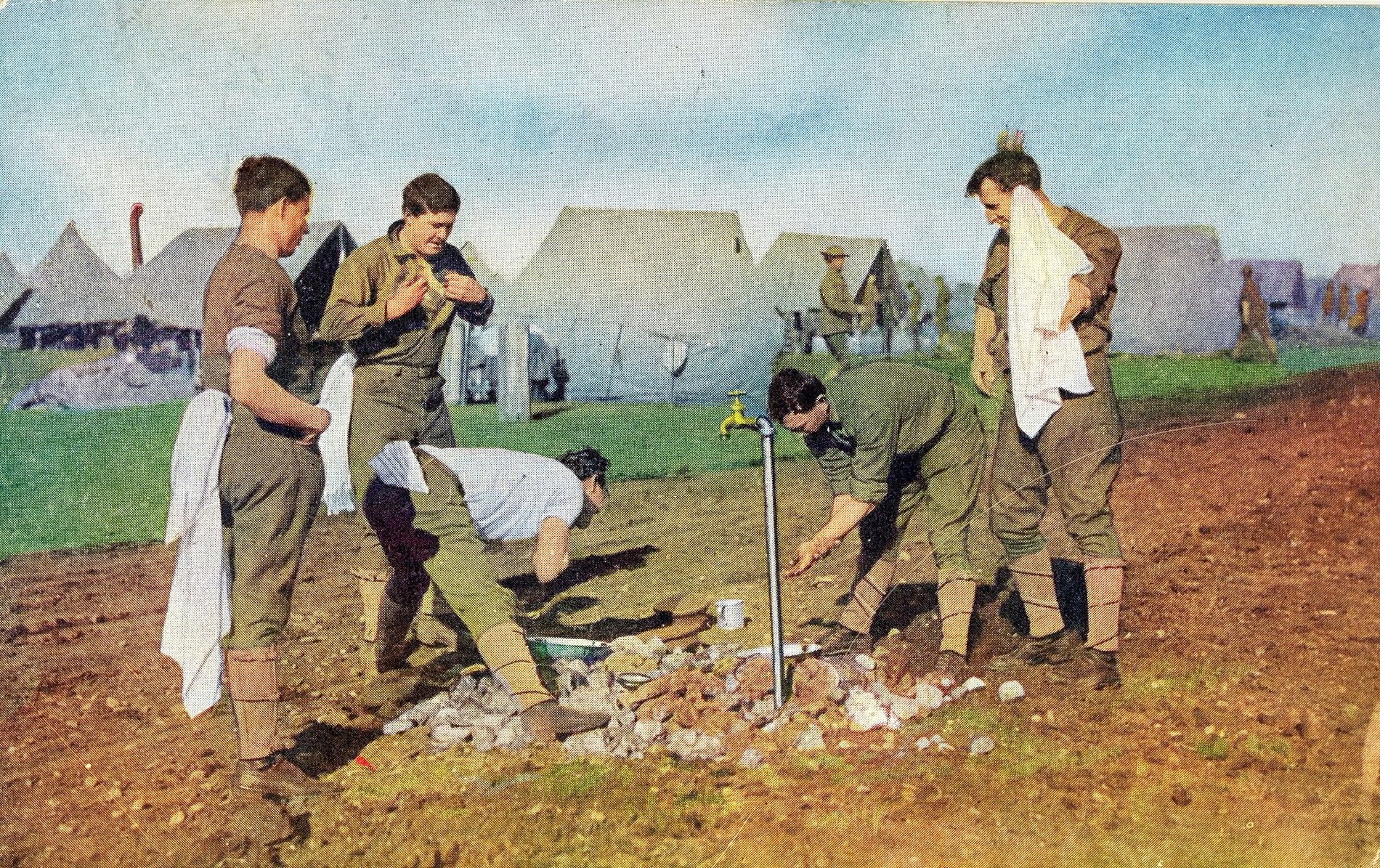 U008
Camp Llano Grande Established to Stop Raids Led by Pancho Villa 1916
U008
Camp Llano Grande Established to Stop Raids Led by Pancho Villa 1916
Camp Llano Grande was was established in Mercedes in 1916 during President Woodrow Wilson's administration. It was one of several National Guard camps created under the National Defense Act to repel cross border raids led by Pancho Villa. Soldiers from Indiana, Minnesota and North Dakota were stationed at the camp from 1916 - 1917. The postcard depicts soldiers shaving and washing up at the water spigot. Upon the onset or World War I, the camp merged with Camp Mercedes to train soldiers for service in France. [13] [90]
Mercedes author and historian G.G. Garcia points out that the so called bandits or desperados were people fleeing the desolation and poverty of war in Mexico. They were men desperate for food and escape from terror. [92]
View Enlarged
View Library
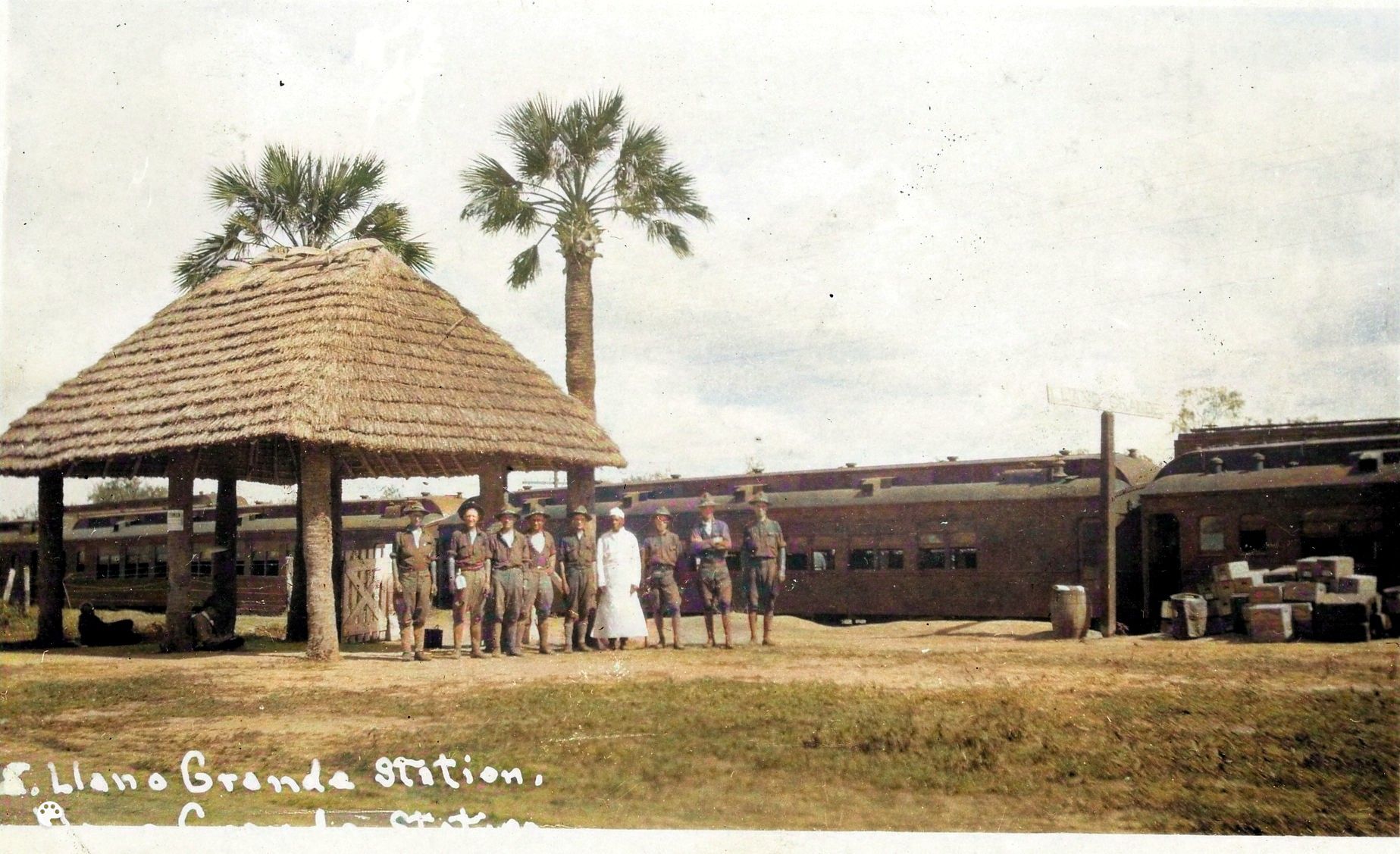 B016
National Guard First Infantry Stationed at Camp Llano Grande in 1917 1916
B016
National Guard First Infantry Stationed at Camp Llano Grande in 1917 1916
In this postcard, six National Guardsmen and the camp cook (the man wearing a white apron) are pictured at Llano Grande Rail Station. A short track connected Camp Llano Grande to the San Fordyce Branch of the St. Louis, Brownsville, and Mexico Rail Station in Mercedes. That station connected to the larger railroad network and provided transportation for soldiers and materials.
In 1917 the Infantry First Brigade at Camp Llano Grande under the command of Brigadier General E.M. Louis consisted of the First and Second Infantry, both from Indiana, and the Fifth Infantry from Nebaska. [84]
View Enlarged
View Library
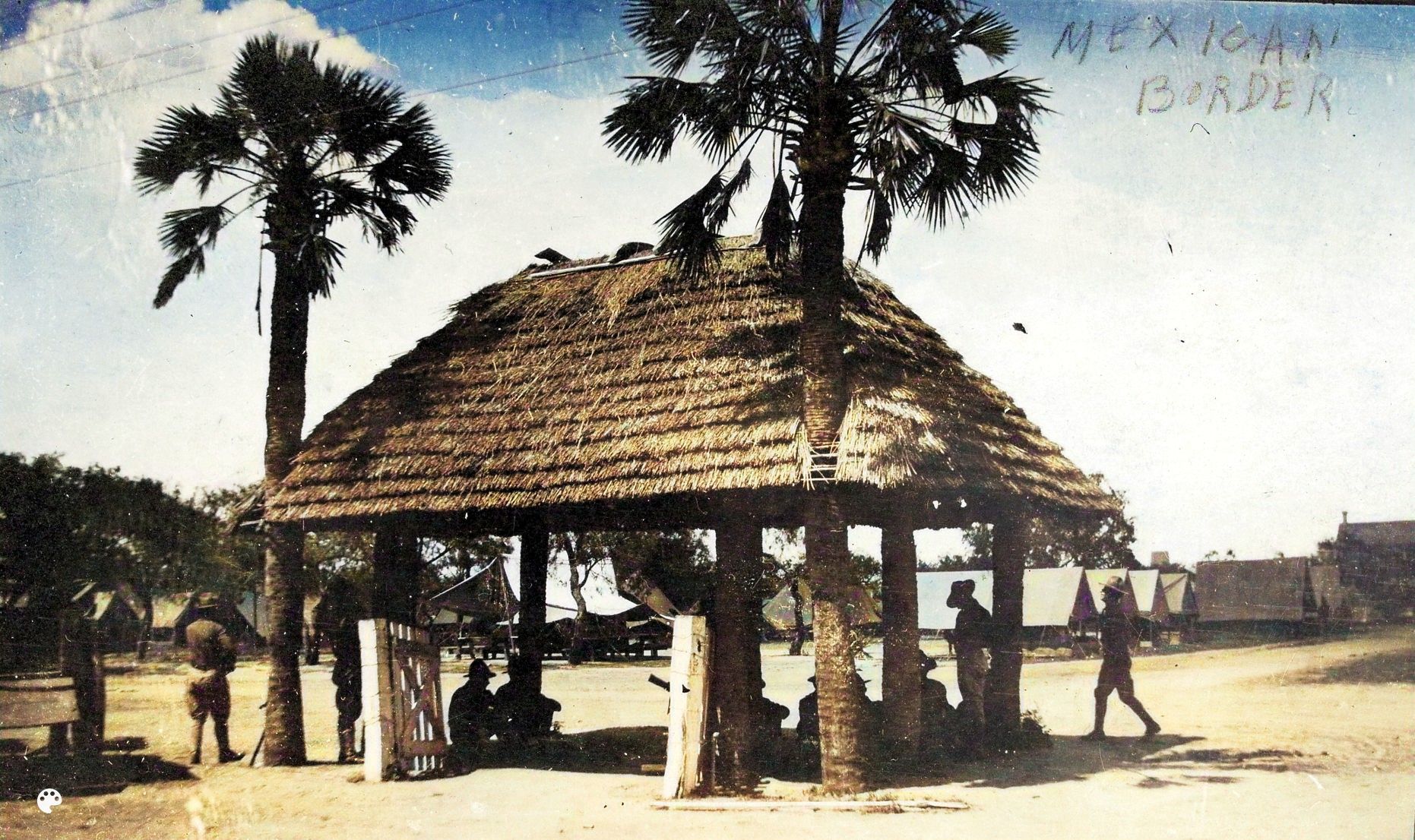 S002
Camp Llano Grande Soldiers Waiting for the Train 1916
S002
Camp Llano Grande Soldiers Waiting for the Train 1916
In this postcard, soldiers are waiting for the train at Camp Llano Grande Station. Four of the horse stables can be seen behind the station in the center. The station was built from palm trees covered by a palm frond roof. Note that the supporting poles are entire living palm trees.
A visitor to the camp found it to be an active military outpost in the South Texas wilderness. 'Last night a rattlesnake measuring seven feet was killed, and tarantulas are as common as spiders. I think I never saw a busier place', she wrote. 'Bugle at 5:30 a.m. Taps at 10 p.m. Baseball games, and the boys raised money for a piano and it is going all day and night.' [45]
View Enlarged
View Library
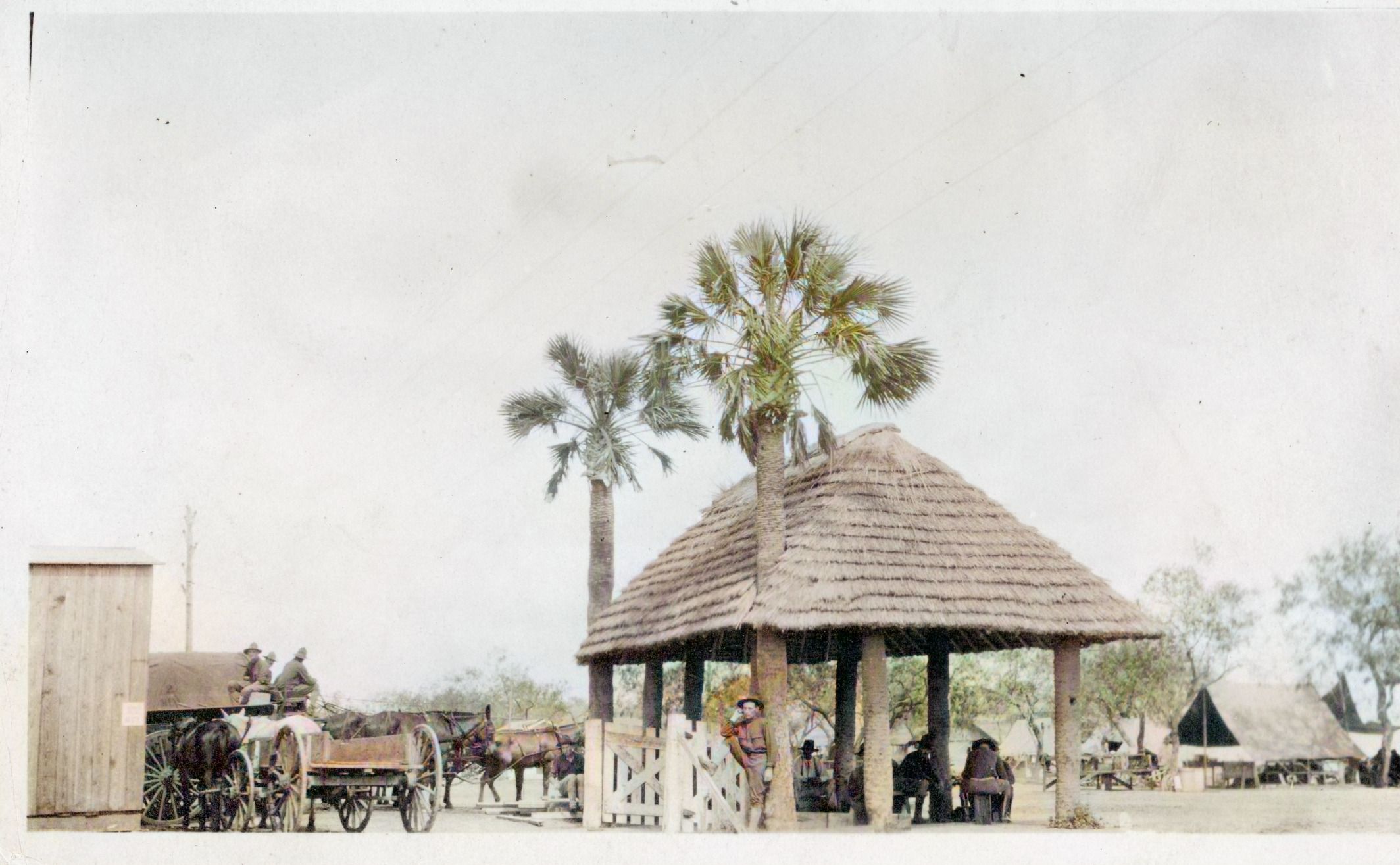 U014
Soldiers Resting under Palapa at Llano Grande National Guard Camp 1916
U014
Soldiers Resting under Palapa at Llano Grande National Guard Camp 1916
This image shows Llano Grande Camp and the horse drawn military wagons there. Soldiers are resting in the shade of the palapa train station. Camp Llano Grande was one of the military installations established along the Mexican border defined by the Rio Grande River. Their job was to protect the United States from cross border raids. The border area was divided into sectors, and each sector was defended by the nearest military camp. Monitoring from observation posts at strategic locations, the soldiers at Llano Grande stood ready to defend their sector from attack. [90]
View Enlarged
View Library
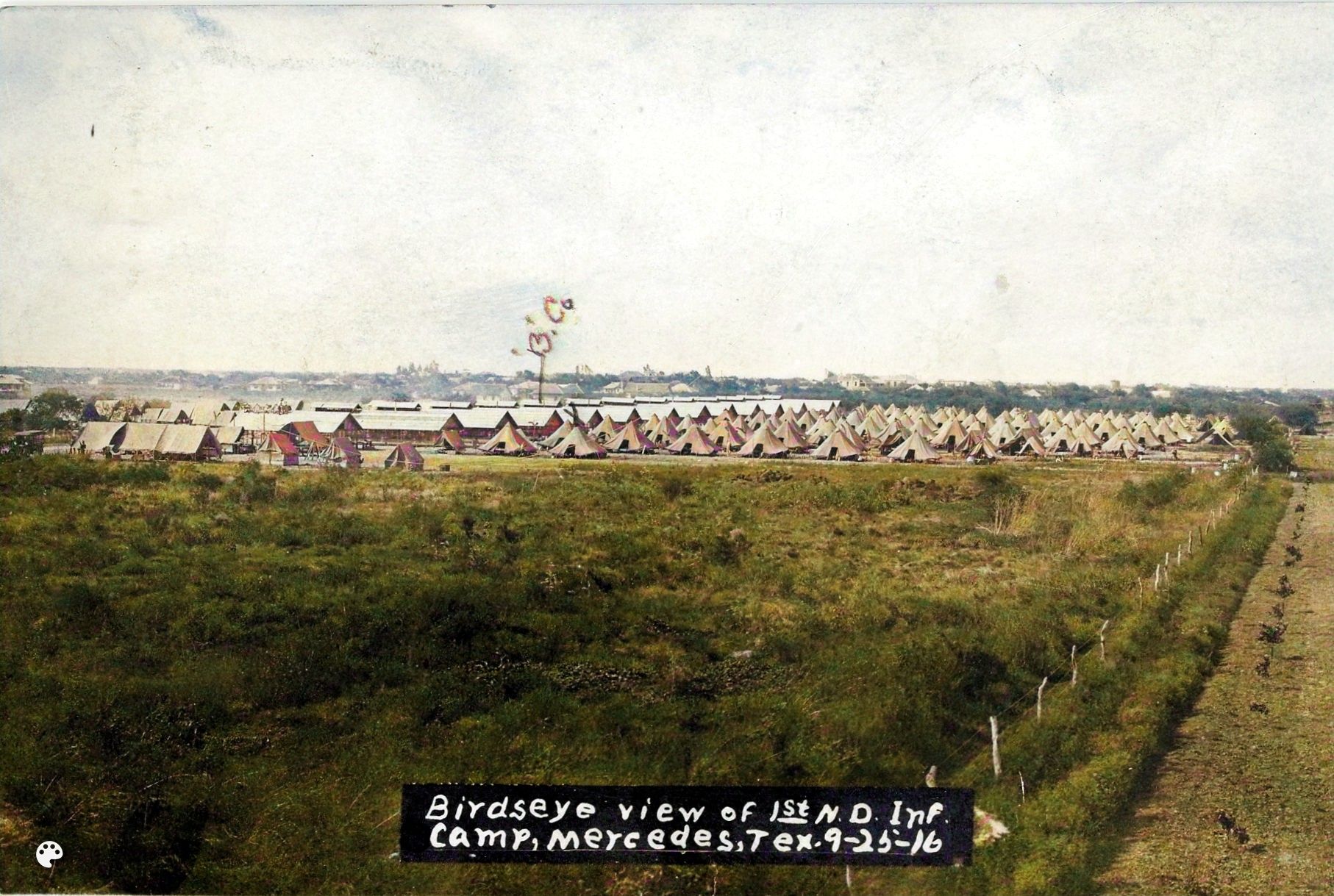 U002
Camp Llano Grande North Dakota Unit 1916
U002
Camp Llano Grande North Dakota Unit 1916
This postcard presents a bird's-eye view of the 1st North Dakota Infantry at Camp Llano Grande which was located West of Mercedes. Enlisted men lived in military tents in a field. The two rows of identical buildings to the left were the stables for the horses, and beyond them, the small homes that provided officer housing. Farms growing crops surrounded the area. Soldiers from Indiana, Nebraska, Minnesota, and North Dakota were stationed at the camp from 1916 - 1917. [13]
By the end of 1917, border raids had largely ceased. Diplomatic negotiations between the Mexican and U.S. governments were progressing on a positive note. Although Villa had never been caught, the efforts were proclaimed to be a success since Villa’s followers had scattered. Llano Grande troops broke camp and returned home to were redeployed to other assignments. [90]
View Enlarged
View Library
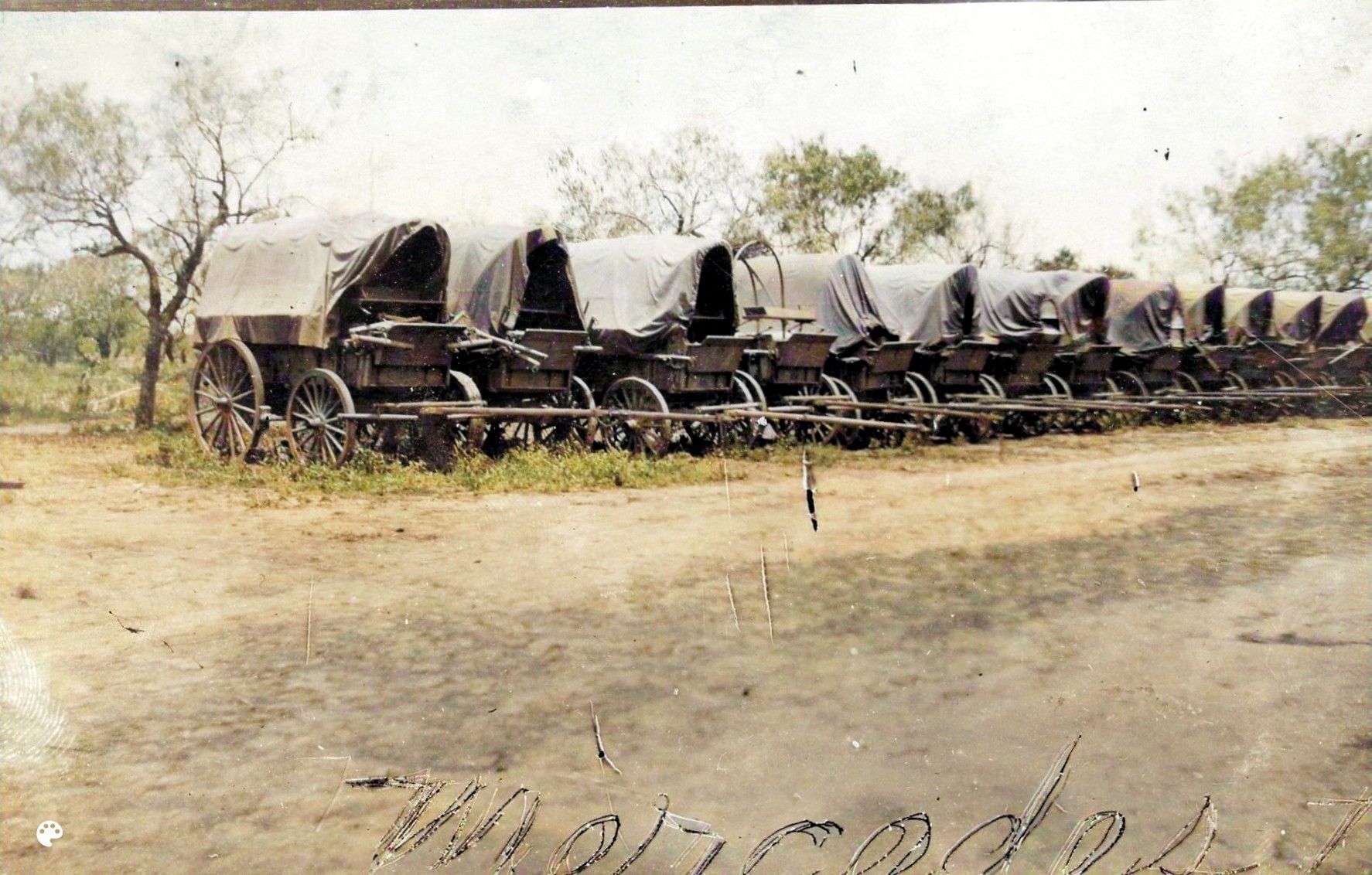 S003
Camp Llano Grande Wagons Were Powered by Four Horse Teams 1916
S003
Camp Llano Grande Wagons Were Powered by Four Horse Teams 1916
In the early 19th century, gas-powered vehicles were not yet used in military operations. Horse-drawn wagons, like these at Camp Llano Grande, were used to transport supplies and equipment for military operations. Each wagon was pulled by a team of four horses. [86] The Army was responsible for supplying the camp's horses. The National Guard troops at Llano Grande were dissatisfied with the quanitity and quality of the horses, and claimed that the Army kept the best equine stock for themselves.[90]
View Enlarged
View Library
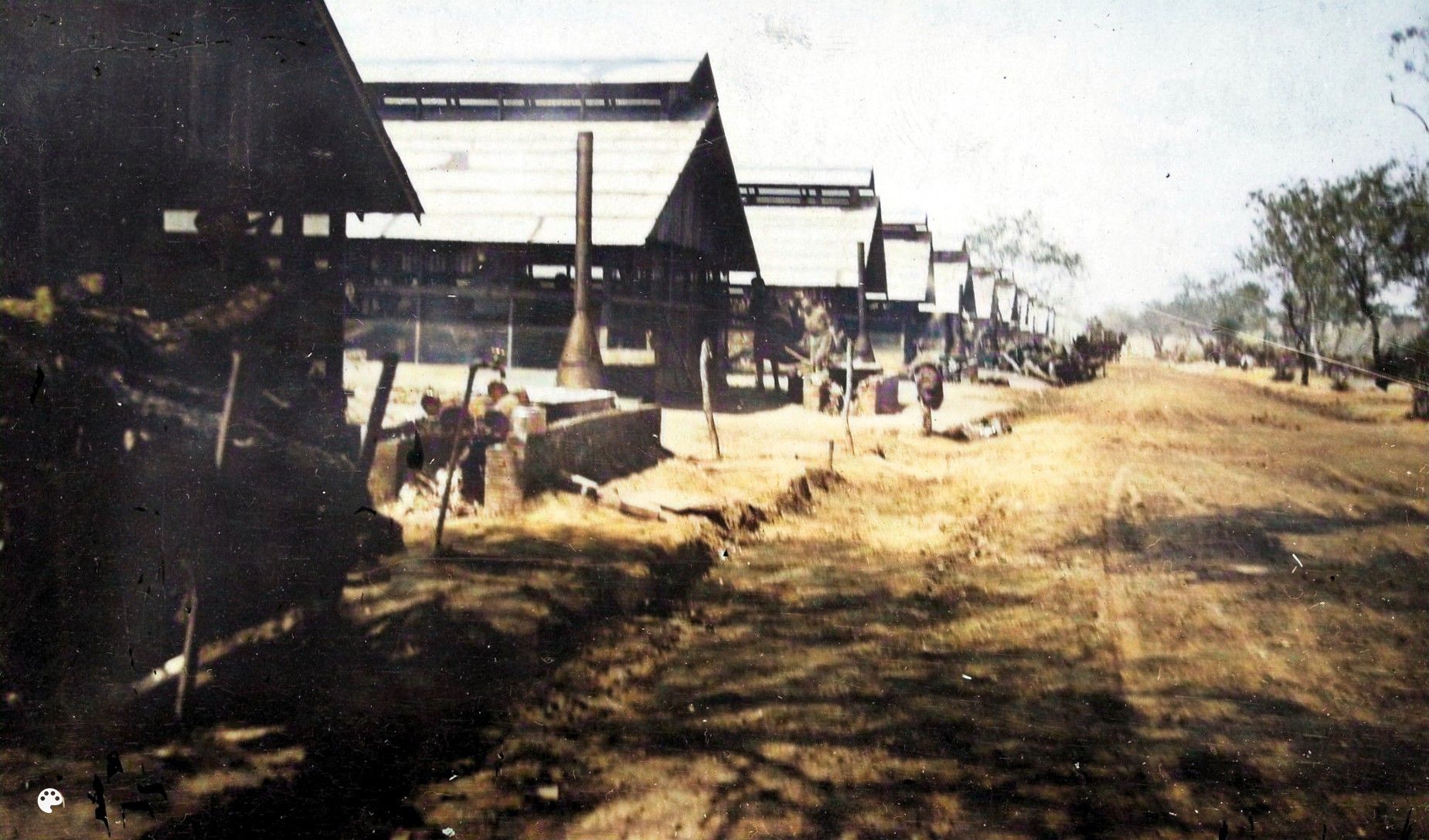 S004
Camp Llano Grande Horse Stables 1916
S004
Camp Llano Grande Horse Stables 1916
This postcard depicts the rows of horse stables at Camp Llano Grande in Mercedes. Enlisted soldiers' tents are located south of the railroad tracks, while the camp headquarters and commissary are located north of the tracks. Military horses were well-suited for traversing unpaved roads and rough terrain along the Rio Grande border. They were quite literally the workhorses, carrying soldiers, messengers, artillery, medical units, and supply wagons, in addition to their ceremonial duties in marches and military parades. [86]
View Enlarged
View Library
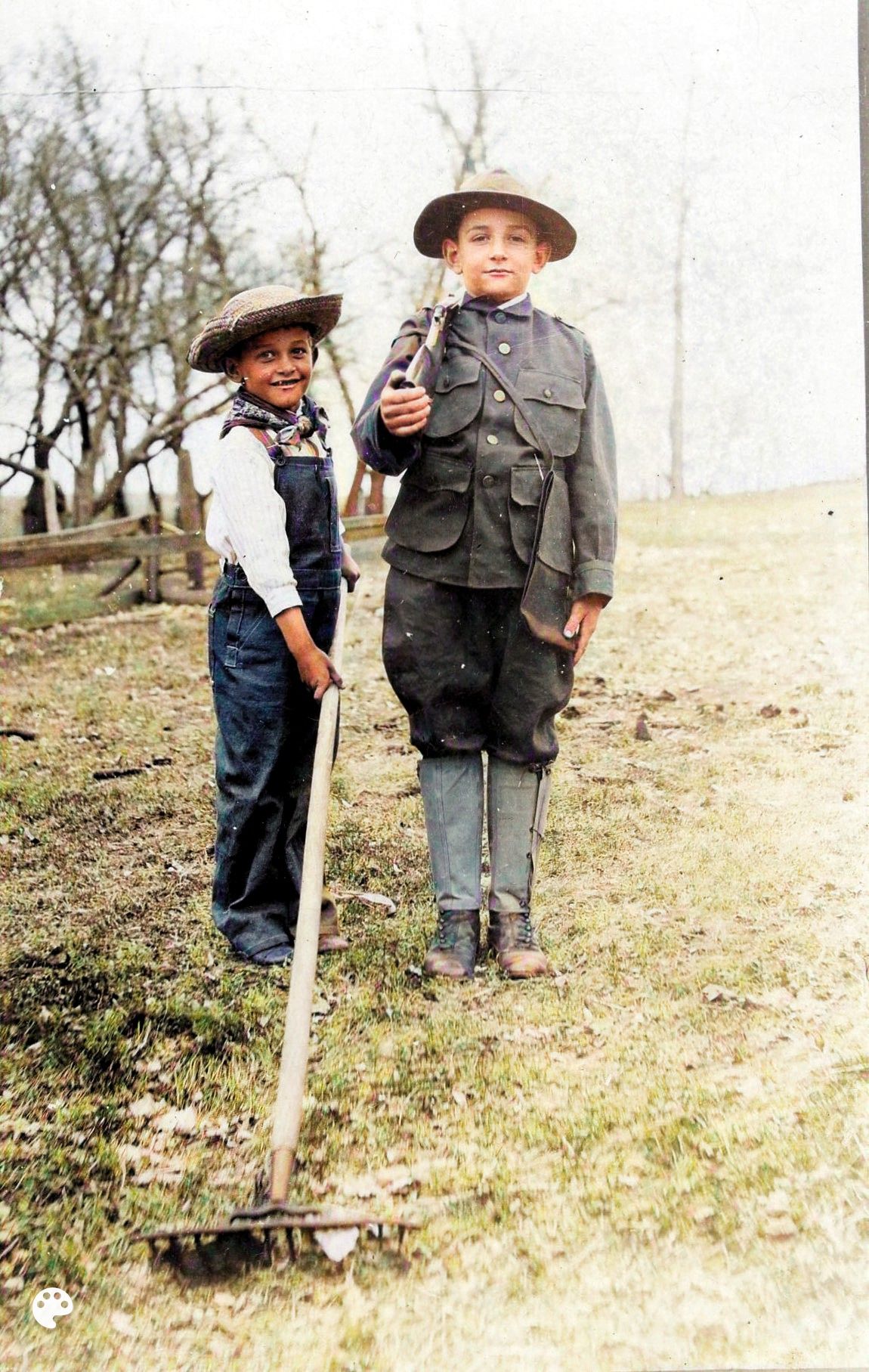 S010
Camp Llano Grande Boys Dressed as Soldier and Farmer 1916
S010
Camp Llano Grande Boys Dressed as Soldier and Farmer 1916
Two boys, one dressed in farmers overalls with a rake, and the other dressed as a soldier with a rifle, are pictured at Camp Llano Grande. The child is even wearing military-issue laced boots that reach almost to the knees. The camp was situated in the middle of farms. There are a number of postcards depicting local people interacting with the troops at the camp. [85]
To occupy the time of soldiers during off-duty hours, the camp commander encouraged athletic competition, which was fiercely contested in boxing, football, baseball, and track. The YMCA's recreation center offered a quiet place to escape, relax, and write letters home. Motion pictures, still very much a novelty, were shown throughout the camp, and the camp's many regimental bands gave concerts in Mercedes City Park. [90]
View Enlarged
View Library









